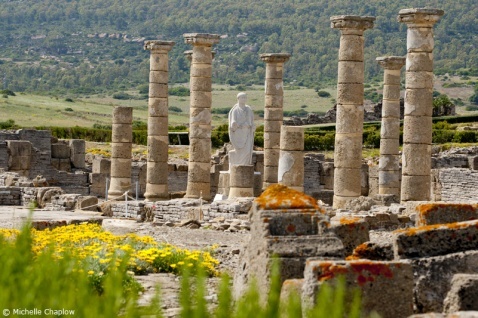
In prehistoric times, Great Roman cities strode across the region © M Chaplow |
|
Architecture
From the cities to the sierras, the rolling inland plains to its long and varied coastline, Andalucía has a wealth of architecture.
When the Romans invaded in the 1st century AD they proceeded to build whole towns and innumerable monuments, as well as roads, bridges and aqueducts. The two significant characteristics of their… More →
The mudéjar style of architecture emerged in Andalucía during the 12th century as Romanesque, with its close links to France and Italy, spread through northern and central Spain. The style, unique… More →
There is much illustrated information available in museums throughout Andalucía about the life and culture of prehistoric man. This has generally been pieced together through archaeological… More →
Classic Gothic architecture, overlapping with the mudéjar style, spread through Andalucía from the 14th century with the Reconquest. As the Christians recovered the towns and cities there was a… More →
Baroque and Neoclassic architecture was prominent in Spain between the late 17th and mid 18th Century. These two styles were not as influenced by the Muslim world as the majority of Andalucian… More →
In prehistoric times the early inhabitants of Andalucía moved great boulders to shelter their dead. Great Roman cities and roads strode across the region, eventually paving the way for Al-Andalus and nearly eight centuries of unparalleled Moorish urban and agricultural construction.
During the Reconquest of Spain, the Moors continued to build in their own tradition under Christian rule giving rise to the Mudéjar style of architecture.
At the same time Gothic design was gradually being introduced from France and by the 13th century had begun to emerge in northern Andalucía.
From the 16th century there is still much evidence of the golden age of the Renaissance from which came the Plateresque style that is unique to Spain.
Delicate adornment gave way to the richly flowing extravagance of Baroque in the 17th and 18th centuries, followed by Neo-Classicism, a movement in the arts and architecture to return to the more classic lines of the past. T
his lasted until the end of the 19th century until Modernism became the dominant trend for industrial and corporate buildings, especially in the second half of the 20th century.
Historical civilisations are often recognised by their architectural accomplishments and cities and regions identified by their buildings and monuments. This is very true in Andalucía, a region rich in visible examples from every period throughout the ages, from the ancient dolmens in Antequera to the contemporary bridge over the Guadalquivir in Sevilla.